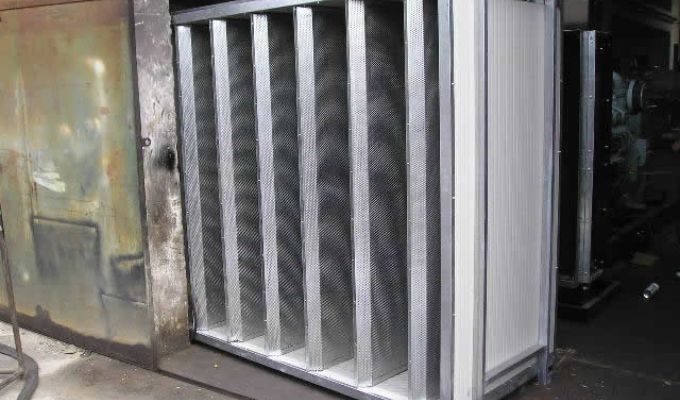In today’s world, managing noise levels within buildings is crucial for comfort, productivity, and functionality. Whether it’s a corporate office, a hospital, a school, or a recording studio, excessive noise can negatively impact occupants’ wellbeing and performance. One highly effective solution to this challenge is the sound attenuator—a device designed to reduce noise levels in HVAC systems and other sound transmission paths without disrupting airflow.
In this blog, we’ll explore what a sound attenuator is, how it works, its different types, and how it plays a vital role in enhancing the acoustic performance of modern buildings.
What is a Sound Attenuator?
A sound attenuator, also known as a duct silencer, is a device used in heating, ventilation, and air conditioning (HVAC) systems to reduce the noise generated by air movement, mechanical equipment, and airflow turbulence. These units are typically installed in the ductwork of HVAC systems to absorb, dampen, or block sound waves while allowing air to pass through efficiently.
Noise in HVAC systems is commonly caused by fans, air turbulence, or vibrations, and if left unaddressed, it can travel through ducts and disturb building occupants. This is especially problematic in quiet environments like offices, libraries, and medical facilities, where acoustic control is paramount.
How Do Sound Attenuators Work?
The design of a sound attenuator typically includes a central air passage surrounded by sound-absorbing materials, such as mineral wool or fiberglass. As air travels through the attenuator, noise is either absorbed by these materials or disrupted by baffles (internal partitions), which reduce the energy of sound waves.
Here’s how it functions:
- Absorption: The sound-absorbing lining captures and converts sound energy into heat, thereby diminishing noise.
- Dissipation: By altering the direction and flow of air, attenuators cause turbulence that breaks up and weakens sound waves.
- Isolation: Some attenuators prevent mechanical vibrations from passing through the duct system by introducing flexible elements or breakpoints.
Importantly, a well-designed sound attenuator balances noise reduction with minimal resistance to airflow, ensuring that the HVAC system remains energy efficient.
Types of Sound Attenuators
There are several types of sound attenuators, each suited to different applications and noise control needs:
1. Rectangular Attenuators: Commonly used in ductwork for commercial buildings. They come in various lengths and lining thicknesses.
2. Circular Attenuators: Typically used in round duct systems or confined spaces where rectangular units are impractical.
3. Elbow Attenuators: Designed for duct bends to reduce noise without affecting the direction of airflow.
4. Splitter or Baffle Attenuators: These use internal vanes to direct and dampen airflow in large ducts or plenums.
Choosing the right type depends on the specific noise problem, airflow requirements, and space constraints of the building.
Benefits of Using Sound Attenuators
Installing a sound attenuator brings several key benefits to a building’s acoustic and operational performance:
- Enhanced Acoustic Comfort: Reduces the transmission of mechanical and airflow noise into occupied areas, creating quieter and more pleasant environments.
- Compliance with Noise Regulations: Helps building designers meet local and international acoustic standards.
- Improved Productivity and Well-being: In workplaces, reduced noise leads to better focus, lower stress levels, and improved communication.
- Privacy: Minimizes the risk of sound traveling between rooms or spaces via ducts, especially in healthcare or office settings.
- Energy Efficiency: Modern attenuators are designed to maintain airflow with minimal pressure drop, helping HVAC systems operate efficiently.
These benefits make sound attenuators an essential part of any building designed for acoustic control, especially when noise sources cannot be eliminated at their origin.
Applications in Various Building Types
Sound attenuators are used in a wide range of environments, including:
- Hospitals and Clinics: To maintain a quiet and healing atmosphere for patients and reduce equipment noise.
- Educational Institutions: To support concentration in classrooms, libraries, and study halls.
- Corporate Offices: To ensure speech privacy in meeting rooms and reduce ambient noise from HVAC systems.
- Hotels and Hospitality: To enhance guest comfort by preventing noise from intruding into rooms.
- Cinemas and Theaters: To preserve audio clarity by isolating the auditorium from external mechanical noise.
- Industrial and Manufacturing Facilities: To contain machine noise within specific areas and prevent it from spreading to quieter zones.
Important Considerations for Sound Attenuator Installation
While sound attenuators are highly effective, their performance depends on proper design, sizing, and installation. Here are a few things to keep in mind:
- System Compatibility: Ensure the attenuator fits seamlessly into the existing HVAC ductwork without causing airflow restrictions.
- Airflow Requirements: Choose models that offer effective noise control with minimal impact on air pressure and flow rate.
- Material Selection: The insulation material should be fire-resistant and non-fibrous if the air is recirculated in sensitive environments.
- Maintenance Access: Design the system to allow easy access for cleaning and inspection to avoid dust accumulation or microbial growth.
Consulting with acoustic professionals during the design phase can help tailor the solution to the building’s specific acoustic needs.
Conclusion: Perfect Acoustics – The Expert in Sound Control
In conclusion, the sound attenuator is a vital tool for managing building noise, enhancing occupant comfort, and maintaining acoustic integrity across diverse environments. From reducing HVAC noise to supporting speech privacy and minimizing disturbances, sound attenuators play a silent yet impactful role in building design.
When it comes to trusted, high-quality sound attenuation solutions, Perfect Acoustics stands out as a leader in the field. With a strong reputation for delivering tailored acoustic systems and unmatched technical expertise, Perfect Acoustics ensures that your buildings not only look good but also sound great. Their dedication to innovation, precision, and performance makes them the perfect partner for achieving your acoustic goals.



